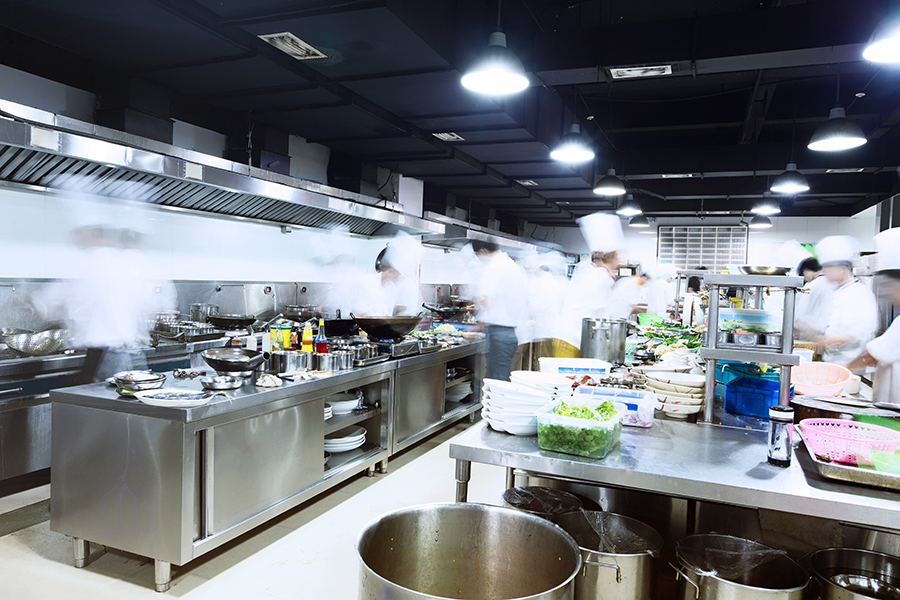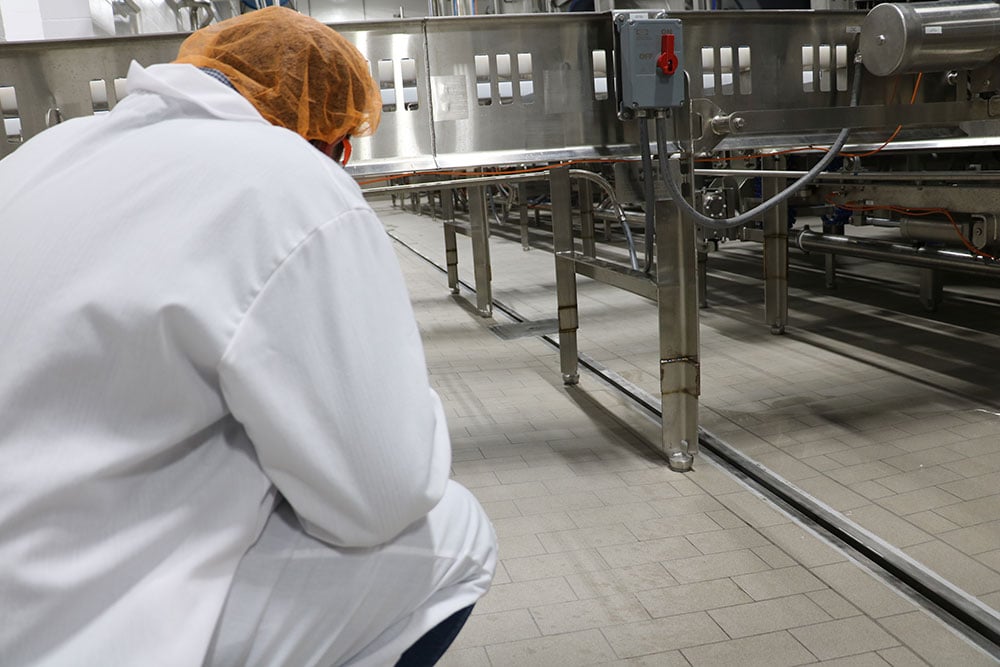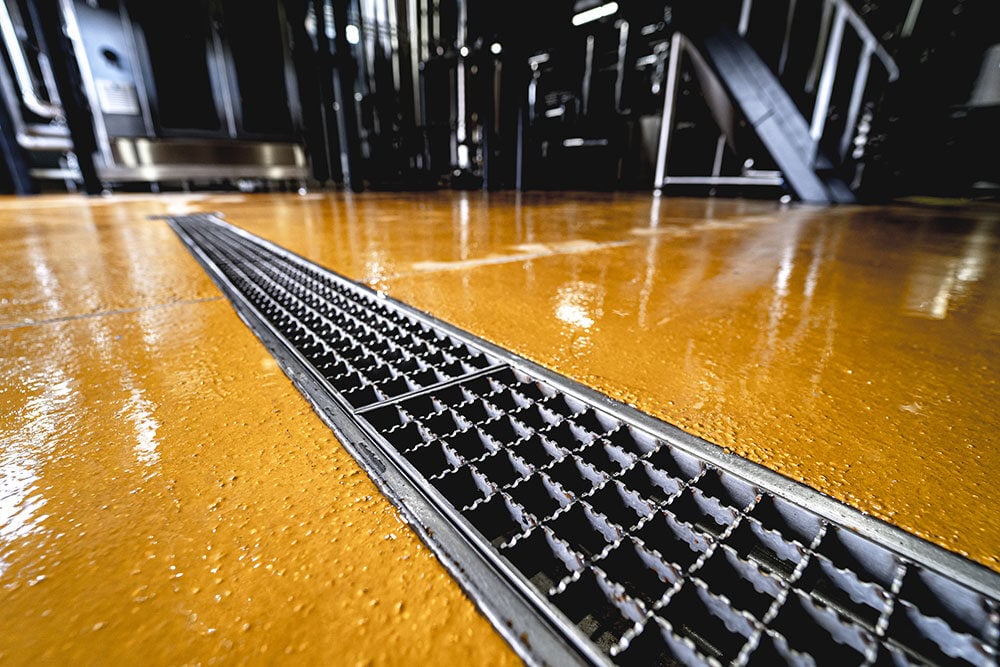The food industry is an encompassing term that covers many areas. It includes the farmers who raise crops and livestock, the manufacturers who make farm equipment and agrochemicals, food manufacturing (including processing, packaging, storage, etc.), catering, and so much more.
Every industry area is competitive and subject to strict rules and regulations. One of the competitive areas of the industry is food manufacturing, with hundreds competing to be the best.
Getting there isn't just about knowing the laws that apply to you; it's having a commercial kitchen that meets the necessary standards and has the right equipment.
WHAT’S A COMMERCIAL KITCHEN?
Commercial kitchens, shared-use kitchens, commissaries, and incubator kitchens are different terms for the same thing: a commercially licensed kitchen used by culinary professionals to prepare food.
A commercial kitchen contains more than just a prep and cook space; there can also be space for storage, food service, delivery, dish return, and cleaning stations.
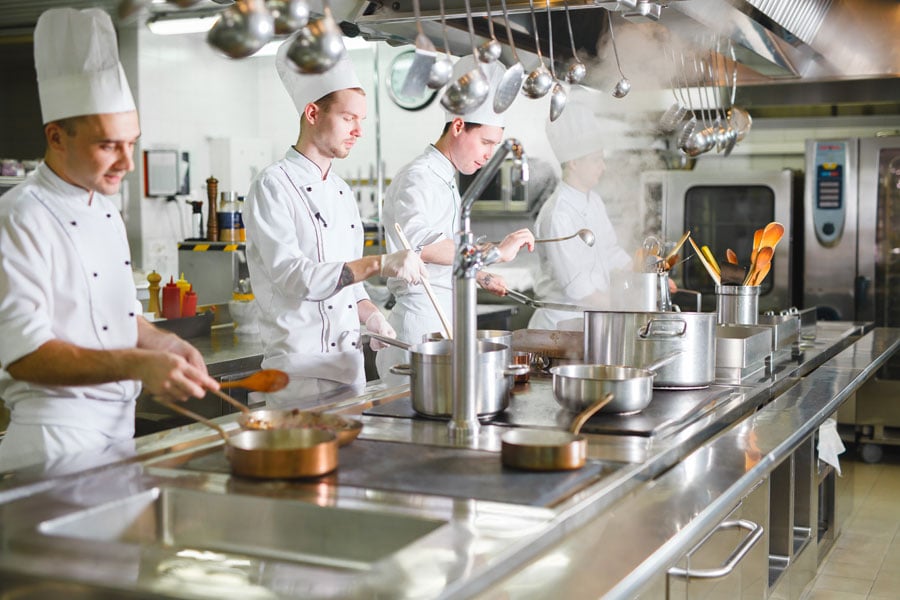
REGULATING COMMERCIAL KITCHENS
A commercial kitchen is exceptionally different from a standard residential kitchen. Unlike residential kitchens, commercial kitchens are held to rigorous standards set by the FDA and USDA, the agencies primarily charged with food safety. The standards include various rules and requirements that cover many different areas concerning how a commercial kitchen is set up and functions. While all the rules and requirements are essential to a safe kitchen, one can often overlook: the commercial kitchen floor drain.
According to the regulations, a commercial kitchen floor drain has to carry wastewater, sewage, and other fluid waste to a designated outlet for disposal to prevent bacteria and contamination from occurring or spreading. The regulations also provide guidelines on choosing a floor drain system, including:
- Must be NSF and CSA-certified
- Must be made of durable, sanitary materials that are easy to clean and help control odors
- Needs to have a heavy-duty load class capacity
- Be corrosion-resistant
- Have the ability to handle extreme temperatures without damage
- Be easy to maintain
WHY IS FLOOR DRAINAGE SO IMPORTANT?
While it may not be a stove or oven, a commercial kitchen floor drain is an essential piece of equipment that must be chosen carefully because it plays a vital role in maintaining a sanitary facility.
As mentioned, drainage systems collect wastewater from the floor's surface and move it through its channel until it reaches the designated disposal area.
Without a drainage system, the wastewater produced in the kitchen will remain stagnant on the ground. This creates a slipping hazard for employees, and also creates a breeding ground for harmful bacteria to grow which can ruin products and ingredients and create a drastic loss in revenue.
The lack of drainage would also lead to foul odors, mold, and an increased risk of pest infestations.
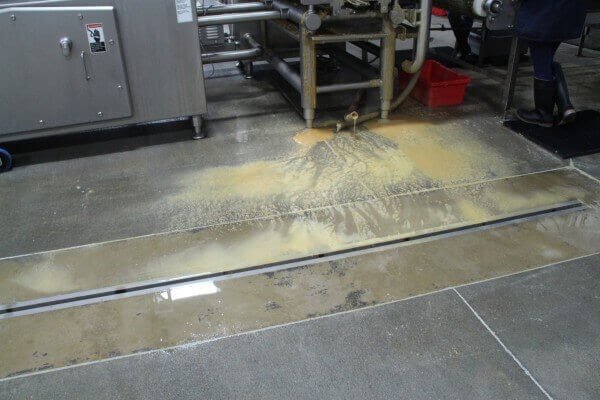
CHALLENGES A COMMERCIAL KITCHEN FOOD DRAIN COULD REDUCE
A commercial kitchen has several unique challenges that drainage solutions must address, including
FOOD WASTE BLOCKAGES
In a commercial kitchen, food waste almost always goes down the drain. Scraps from food preparation and debris from plates, utensils, and cookware all end up in the drain, where they begin to accumulate. As more debris accumulates, it creates obstructions that impede the flow of wastewater. The longer the obstruction remains unresolved, the worse it will become and will overflow the drain. This can also lead to bacteria growth, contamination, and foul odors. Having a commercial kitchen floor drain could help eliminate the possibility of food buildup and thus contamination.
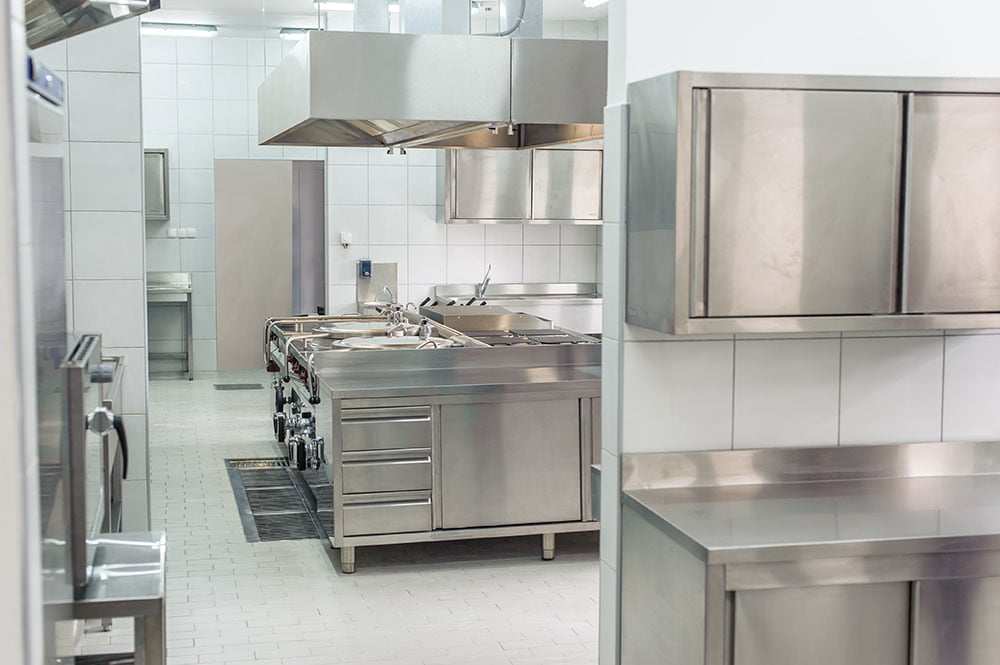
GREASE BUILDUP
Another significant cause for issues in drains is grease buildup. Fats, grease, and oils are all standard products in commercial kitchens, and they all inevitably end up down the drain. They end up coating the inside with slick, sticky residue. Like with food debris, the fatty deposits can accumulate and solidify to create an obstruction.
CONSEQUENCES OF POOR DRAINAGE
Poor drainage can result in many serious consequences, including:
Health Code Violations
One of the most severe consequences is health violations. Poor drainage can overflow, which results in wastewater returning to the surface. This water, full of bacteria and other contaminants, can spread throughout the kitchen—sometimes getting on surfaces and contaminating them, food products, and more.
It can lead to foodborne illness outbreaks, which could spur health officers to shut down the establishment for not maintaining a sanitary kitchen. You may also be fined for failing to meet health code standards.
Beyond the fine, you'll suffer a loss of revenue until you resolve the issue and are permitted to reopen. Your reputation will also suffer, as customers will be less likely to trust your kitchen, even if you have the paperwork stating that you're cleared to operate.
By implementing an effective commercial kitchen floor drain system, you could reduce water buildup and blockage that could potentially lead to health code violations.
Operational Disruptions
Once you get hit with health code violations, all operations must stop, which means your business gets shut down until the problem is resolved. This doesn't happen overnight when the problem is poor drainage; you will need to unclog the drain and potentially modify the system or replace it entirely to prevent the issue from occurring again.
Then, you must thoroughly clean and sanitize the kitchen and establishment to ensure that there is no lingering bacteria. After that, you can go through the process of getting a new inspection to see if you pass and can reopen. The entire process can mean weeks of lost business and revenue.
Safety Hazards
Overflowing drains create many safety hazards; Foodborne illnesses from contamination are one one thing that could happen. More common are accidents caused because of the slippery floors themselves. With wet, slick floor surfaces, kitchen staff can easily slip and fall, resulting in anything from minor scrapes to serious injuries.
However, if you use a commercial kitchen floor drain, one that allows water seamlessly floor through the floor and down a drain, you could possibly eliminate most of these situations from coccuring
Loss of Reputation
Customers trust that kitchens are clean and sanitary. When customers start getting sick, or employees injured, trust gets broken and is hard to regain.
Even after everything has been resolved, some customers may give you a second chance—others may not.
WHAT TO LOOK IN A COMMERCIAL KITCHEN FLOOR DRAIN
For commercial kitchens, you cannot choose just any drainage system; you need one with specific features that meet USDA and FDA standards. Some of the key features to look for include:
STAINLESS STEEL CONSTRUCTION
Stainless steel is the best choice for commercial kitchen floor drainage. It is the most sanitary choice and offers the most durability in terms of load-bearing capability, corrosion resistance, and temperature resistance.
CORROSION RESISTANCE
Cleaning in commercial kitchens requires strong chemicals like chlorine, ammonia, and iodine, which all have corrosive properties. Acidic foods and ingredients like tomatoes, citrus fruits, and vinegar can also corrode materials with prolonged exposure. a commercial kitchen trench drain needs to be able to withstand exposure to these types of chemicals and ingredients without becoming compromised.
EASE OF MAINTENANCE
Commercial kitchens require a lot of maintenance. Finding a floor drain that is easy to maintain can help lessen the workload; options clean Clean-in-Place (CIP) can significantly cut down on cleaning times. With CIP, you can create an automated cleaning schedule that allows workers to do other tasks while minimizing the risk of injury from chemical exposure.
OTHER FACTORS TO CONSIDER REGARDING DRAINAGE CHOICES
Beyond the features, other factors require consideration when choosing a drainage system.
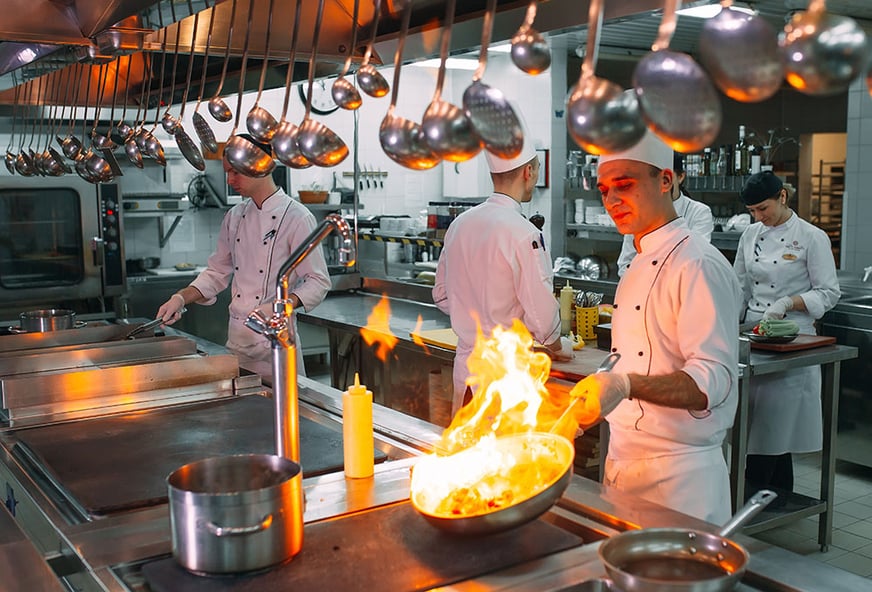
THE SLOPE OF THE FLOOR
Certain types of drains require floors that slope from four directions, which can require modifications to the floor. Even with systems that don't require a four-way slope, you must ensure adequate sloping to allow the wastewater to move to the drain. Otherwise, it will remain on the surface and won't drain.
FLOW RATES
Ensuring that you choose a system with the right flow rates is critical to ensure it can handle your wastewater runoff. A system that is too small can easily become overwhelmed and get backed up, which leads to sanitation issues.
Ideally, you want a drainage solution that you can customize to fit your needs. Choosing your system based on the size and layout of your commercial kitchen can significantly affect its efficiency. Customization will also allow you to add features that fit the specific needs of your kitchen.
BEST COMMERCIAL KITCHEN FLOOR DRAIN OPTIONS
There is no shortage of commercial kitchen drainage options on the market. For the best, there is none better than FoodSafe Drains, a company dedicated to high-quality food-safe drainage. They offer two types of food-safe drains:
TRENCH DRAINS
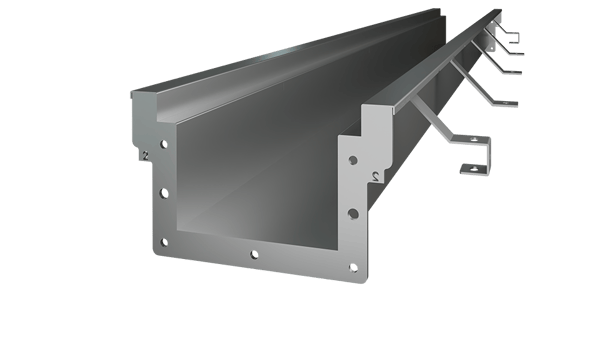
A commercial kitchen trench drain is a type of drainage that most are familiar with.
They feature a wide channel that is covered by a grate and they are used in many places. A commercial kitchen trench drain is a heavy-duty system and it is an excellent choice when removing large amounts of solid waste, like food scraps, from the kitchen. The FoodSafe Trench Drain is available in rounded, flat, and V-bottom styles.
Advantages of the Trench Drain include:
- It is made with T304 and T316 stainless steel, and is compliant with NSF/ANSI/3-A standards.
- The wide channel offers a higher capacity that allows it to handle larger amounts of wastewater. It can also handle solid waste without backing up or clogging.
- The great protects the drain and prevents accidents. It also features tamper-proof locks to ensure that only authorized personnel can access the drain channel.
- It features a heavy-duty Load Class D rating.
- It is Clean-in-Place compatible.
- It can withstand extremely high temperatures and is resistant to corrosion.
Disadvantages of the Trench Drain include:
- It requires more extensive excavation to install, and the larger size makes it less discreet, which may not be ideal for some situations.
- Grates wear down over time, which creates additional expenses. They also add an additional step to the cleaning process.
SLOT DRAINS
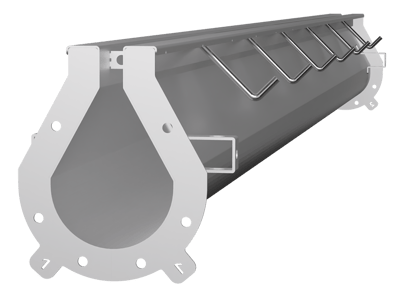
The second option is the FoodSafe Slot Drain, an updated version of the traditional trench drain. Unlike traditional trench drains, the Slot Drain has a slimmer profile and eliminates the need for a grate cover.
Advantages of the Slot Drain include:
- The slimmer, grate-free design creates a sleeker image that can blend seamlessly into any space and go unnoticed. It also eliminates the concerns of grate covers, like breakage and cleaning.
- Like the FoodSafe Trench Drain, it uses T304 and T316 stainless steel and complies with NSF/ANSI/3-A standards.
- It is Clean-in-Place compatible.
- It features up to a Load Class E rating, the highest rating possible.
- It is easier to install or retrofit into commercial kitchens.
- It offers flow rates of up to 27 gallons per minute per foot of drain.
- It is temperature and corrosion resistant.
Disadvantages of Slot Drain include:
- While Slot Drain's flow rates are high, they still do not offer the capacity you get with the FoodSafe Trench Drain and cannot handle larger amounts of solid waste.
Both systems are high-quality options for any commercial kitchen when solely looking at the efficiency and sanitation aspects. Cost varies depending on the system you choose and the necessary size, but you also have to consider the additional costs, like installation and grate replacements for trench drains. Regardless of the cost, you want to go with the best system for your facility; if you deal with more solid waste, then you will want to opt for a commercial kitchen trench drain. Otherwise, the Slot Drain is the more cost-effective option.
GETTING THE RIGHT DRAINAGE FOR YOUR COMMERCIAL KITCHEN
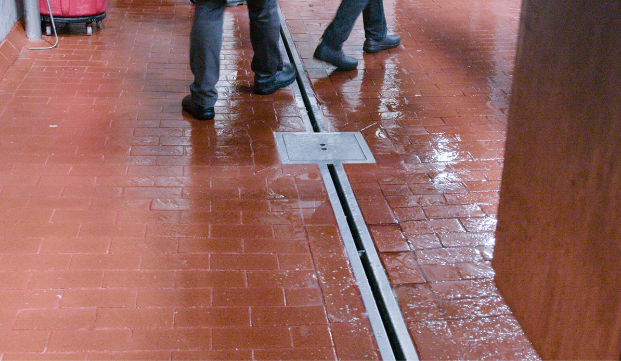
Commercial kitchens can be stressful, especially all of the countless rules and regulations they are subjected to.
Following all regulations is vital; otherwise, you can face serious financial consequences. There are so many important areas to pay special attention to, including your floor drainage.
FoodSafe Drains offers some of the best options on the market, and they meet the strictest of requirements. The Slot Drain, in particular, is a safe, efficient solution in a sleek package that will last for years.
Regardless of your chosen system, you will not be disappointed in entrusting FoodSafe Drains to solve your commercial kitchen drainage problem.
Contact FoodSafe Drains today to learn more.